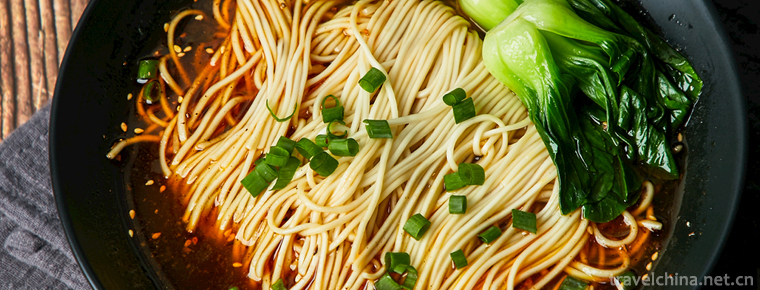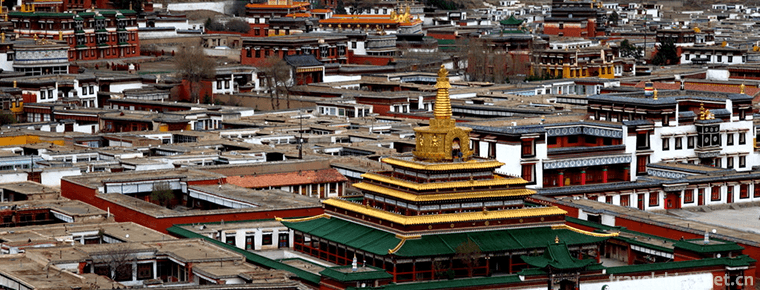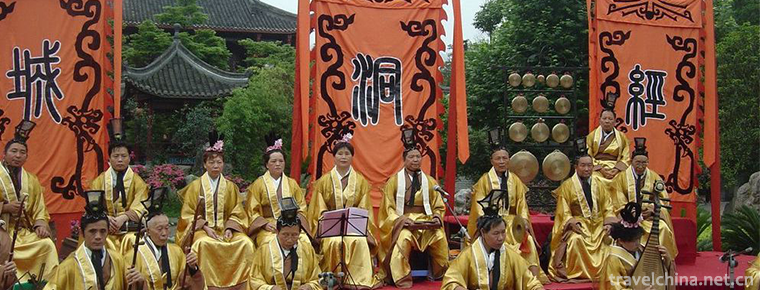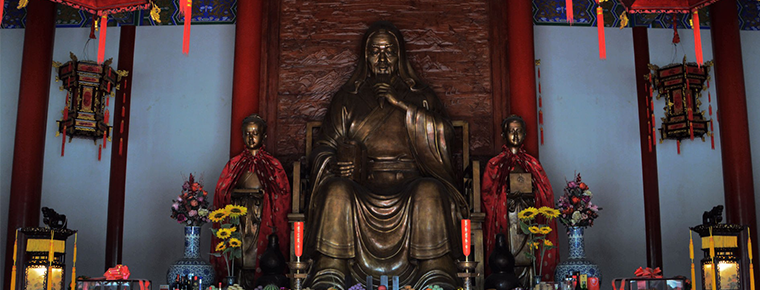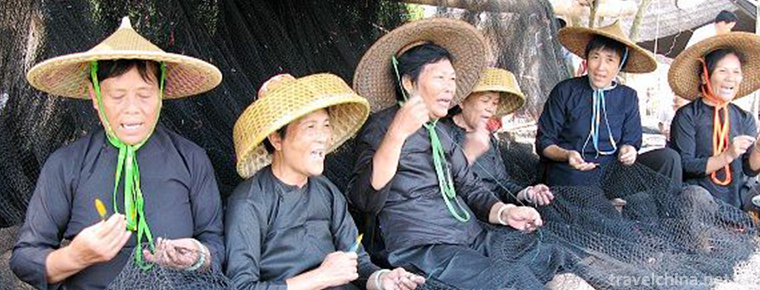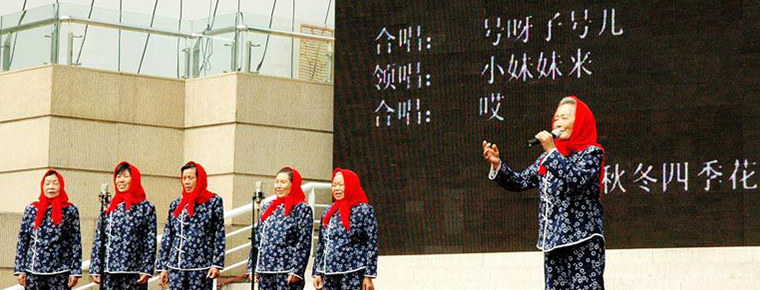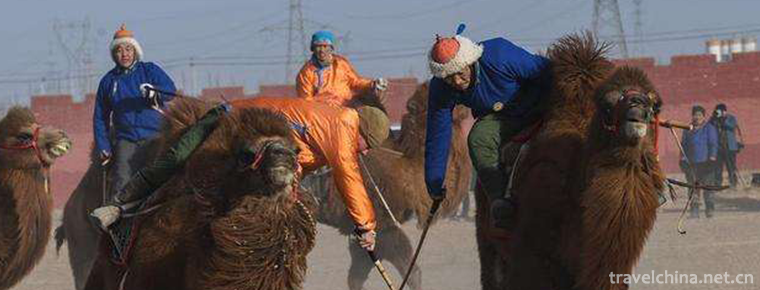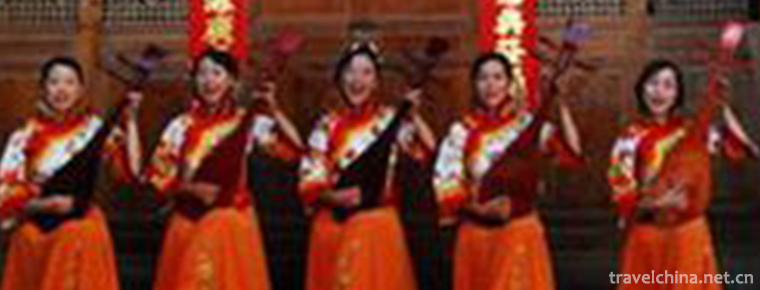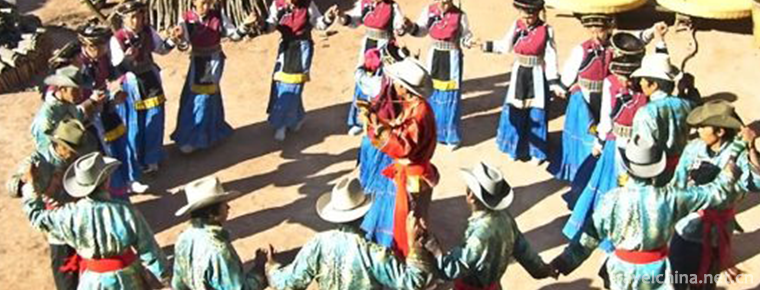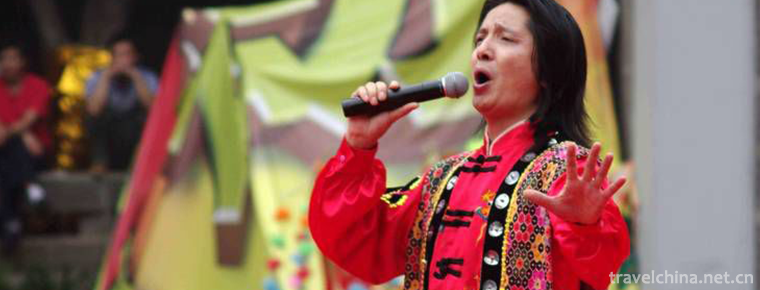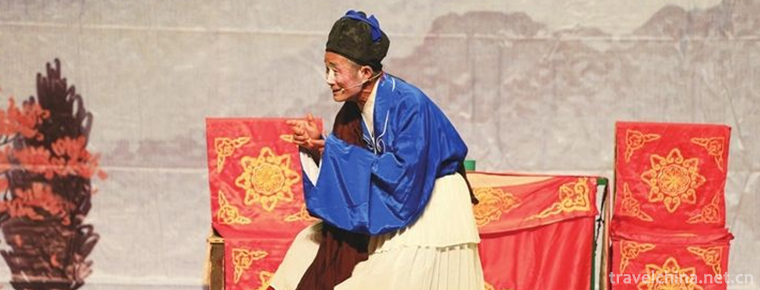Gallequin Art
Gallequin Art
Jia Liqin is made by Jia Xiwang of Jia Liguo, who imitates Chinese Han Zheng. The shape is similar to that of Zheng, and it is also a string and a pillar. There are twenty-one strings in the current Galileo, seven tones and five tones in scale arrangement. The technique of right-clicking and left-clicking is basically the same as that of Zheng. It has unique artistic style and rich and colorful performing skills. It can play solo, ensemble and ensemble as well as singing. The types of Jiali piano can be divided into three categories: Zhengle Jiali piano (ancient Jiali piano), Santong Jiali piano and modern 21-string Jiali piano. It has a deep origin with the Chinese Zheng (Guzheng).
On May 23, 2011, the art of Jia Liqin was approved by the State Council and listed in the third batch of national intangible cultural heritage list.
historical origin
Kali Qin is a stringed musical instrument of Korean nationality. Korean is called gagagao. It is popular in Liaoning, Jilin, Heilongjiang, Inner Mongolia and Hebei provinces, especially in Yanbian Korean Autonomous Prefecture.
In Yanbian Korean Autonomous Prefecture of Jilin Province in Northeast China, along the winding Tumen River and Yalu River, and in the forest sea and snow plain of Changbai Mountain, there are diligent, brave and versatile Korean people. They not only developed the production of agriculture, forestry, fishery and other industries, but also created brilliant culture and art. In people's music life, the Jiali Qin is a popular musical instrument with a wide range of popularity.
It has a long history. Kali Qin is an ancient Korean stringed instrument. It has been popular in the Korean Peninsula, the eastern neighbour of China, as early as 500 A.D. Its shape is very similar to that of Zheng. According to legend, it was made by the ancient Jiashi King of Galileo, Yule Zheng, and Hanzhu (Zheng and Zhu are all ancient stringed instruments of the Han nationality), together with the national characteristics. The Korean ancient book History of the Three Kingdoms contains: "Jia Li Qin is also made by Zheng of the Chinese Music Department... Although there is little difference between Jiali Qin and Zheng system, it is probably similar. Galileo, also known as the new violin, is the main instrument of the new violin. "Xinluo Guji" talked about its origin and said: "Jiashi King Jiashi made the instrument of Tang Dynasty when he saw the instrument of Tang Dynasty. Wang Yiwei said that the dialects of different countries are different, so the voice can not be one; he ordered musicians to create twelve songs in Rexian County, Jiangsu Province. Later, Yu Le took his country to confront him and threw his musical instrument into Xinluo Zhenxing King. Wang accepted it and settled in Guoyuan. These documents show that the Jiali Qin was made by imitating the Zheng used by the Han people. In the 6th century AD, it was prevalent in the southern part of the ancient Korean kingdom of Sino-Luo, which was closely related to the Tang Dynasty. During the period of the New Luo Dynasty (7th to 10th centuries A.D.), the karaoke instrument spread eastward to Japan (Japan calls it the new karaoke instrument). There is still a karaoke instrument made at that time in the Zhengcang Yard of the Dongda Temple in Nara.
Ancient traditional karaoke piano, the original Yale karaoke piano and popular karaoke piano, the body is made of Paulownia wood, is the whole log from the longitudinal to semi-broken, half of its excavation into tile-like hollow grooves, in the "tile" convex surface with strings, without a floor. The Yale Galileo is slightly wider, 167 cm in length and 33 cm in width; the Vulgar Galileo is slightly narrower, 152 cm in length and 17 cm or 21 cm in width, each with 12 strings, one string and one column, which can be moved. The greatest characteristic of the Jiali piano is that at one end of the end of the piano there is a lamb horn string plate. Cheng Ling and others compiled the "Music Learning Standard" (completed in 1493) which contains the picture of Galileo piano. At that time, the horn board was very large, and the strings were fixed on the tie board. The remaining parts of the wire rope used for the tie string were woven into bunches of silk knots. After centuries of spread and improvement, and drawing on the advantages of other national instruments, the Jiali piano has increased the base plate, formed a resonance box, significantly increased the volume and enriched the tone color of the piano.
Inheritance significance
The modern Kali Qin is composed of frame, panel, base plate, Yueshan, piano column and strings (figure). The resonance box is a flat rectangular box with a length of 150 cm, a head width of 22 cm and a tail width of 26 cm. The right is the head of the piano and the left is the tail. The surface of the frame is covered with an arch-shaped thin wooden board, with a bottom plate and a foot. There are three circular or zigzag sound-producing holes on the bottom plate. At one end of the piano head, there are raised Yueshan strings and stringed holes with strings hanging. Thirteen strings. Pillars are herringbone, 6 cm high and 6.5 cm wide. There are small holes drilled in the pillars in series with strings. The strings are arranged in the middle of the panel in geese rows. Each string is a pillar, and the pillars can be moved to adjust the pitch. Intelligent Korean people have accumulated rich experience in piano making through long-term continuous practice. They use soft and easy-to-vibrate plane wood to make panels (some also use scales grown in Changbai Mountain), chestnut wood to make baseboard, mangrove and pear wood to make piano frames and pillars, and silk or wire strings to make piano strings. Since the 1960s, the Gallequin has been continuously reformed. Jin Zhen, a renowned performer of Korean Kali Qin in Yanbian Song and Dance Troupe, cooperated with Yanji National Instrument Factory to produce a five-scale and eighteen-stringed Kali Qin. Later on, Jin Lizi, a Korean gambol performer of the Central National Song and Dance Troupe, developed a seven-tone scale 21-string and 23-string gambol, which enlarged the resonance box and used nylon strings and nylon wire-wound strings. The sound was loud and beautiful.
In the Chinese Musical Instrument Museum of the Music Research Institute of Beijing Academy of Art, there are several pieces of Jiali Qin on display. One is a Korean folk product from Yanbian. The whole body is made of pine wood. The length of the body is 147 centimeters, the width of the head is 20.5 centimeters, and there are 12 strings. The frame and the bottom of the piano are covered with red paint. There are also two gifts from Japanese friends transferred by the Chinese Musicians Association. They are made of pine wood and Paulownia wood. The length of the instrument is 144 centimeters, and the width of its head is 23.4 centimeters and 26 centimeters, respectively. There are 12 strings and 13 strings, of which 13 strings are covered with brown paint. In the large-scale picture album "Picture Book of Chinese Musical Instruments", there is a modern-made Jiali Qin.
Representative works
Regarding the genre of Gallequin, it is often divided by different styles of regions and famous artists. Music is mainly divided by loose tune music. "Jia Liqin San Diao" originated in the southern part of Korea, and later spread to the northern part of Korea and Yanbian region of China. Because of the different language inhibitions in different places, music also has different local characteristics.
As a highly skilled instrumental solo with improvisation, Jialiqin Santong produces different styles and characteristics in expressing feelings, applying techniques and exerting skills, especially in the density, speed and intensity of left-hand strings, thus forming different schools.
There are many schools in Jialiqin Santong, but there are mainly Jinchangzuo School and Shen Xiangjian School. Jin Changzuo's disciples were divided into Jinzhupo School, Anji Jade School, Cui Jade Three School and so on. Jiali Qin in Yanbian mainly inherited Anji Jade School and Cui Jade Three School.
The more famous traditional music are: Jia Liqin Santong, Moon, Bird Ring Bell, You Mile, Platycodon Ballad, Fung Nian Yue and so on.
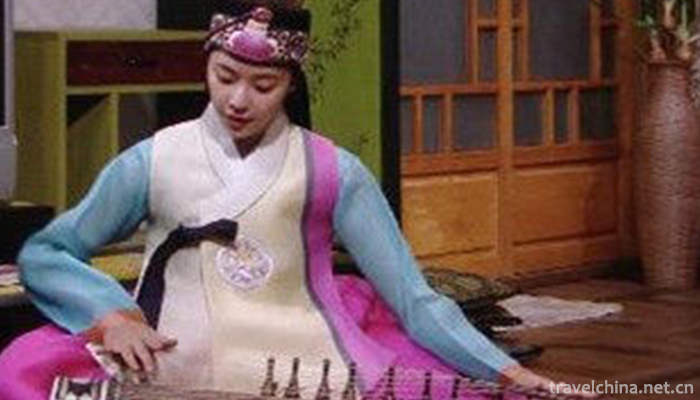
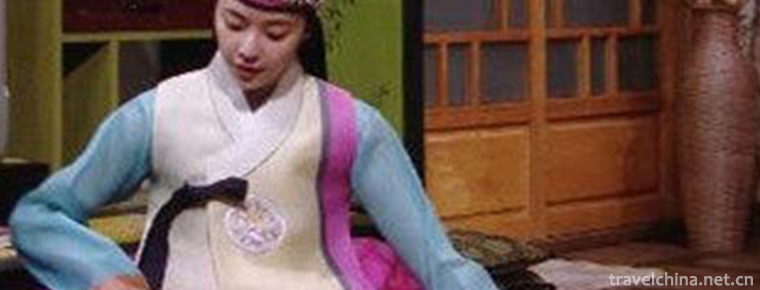
Gallequin Art
-
Chongqing small noodles
Chongqing small noodles is one of the four characteristics of Chongqing
Views: 324 Time 2018-10-12 -
La blun Temple
Labrang Temple is one of the six main monasteries of the Gelug Sect of Tibetan Buddhism. In 1982, Labrang Temple was listed as one of the key cultural relics protection units in China
Views: 179 Time 2019-01-29 -
dongjing music
Dongjing music is a very ancient traditional instrumental music, which originated in Sichuan Province in the Song Dynasty and is now popular in Sichuan Province
Views: 205 Time 2019-04-28 -
Hu Yiyang Legend
Hu Yiyang (about 1639-1718) is a good prime minister. He is a native of Liuting Village, Renhua Township, Moxian County (now Liuting Street, Chengyang District, Qingdao City).
Views: 170 Time 2019-05-03 -
Lingao Fishing Song
Lingao Fishing Song is a kind of Han folk song which is popular among fishermen in Lingao County, Hainan Province. Because of its use of the lining "Li Li Mei" and related legends, it is als
Views: 290 Time 2019-05-13 -
Maoshan chant
Maoshan chant is a traditional folk song originating in Maoshan area of Xinghua City, Jiangsu Province. It is a kind of folk song that people in Maoshan use chant form with chant words to stimulate em
Views: 150 Time 2019-05-28 -
Mongolian camel ball
The intangible cultural heritage is the manifestation and cultural space of various traditional cultures which are inherited from generation to generation and closely related to people's life.
Views: 184 Time 2019-06-04 -
Nanping Opera
Nanping Opera is a folk art popular in the area of Jiuzhaigou County (former Nanping County) on the Northwest Plateau of Sichuan Province. It was once called "Nanping Pipa Playing and Singing&quo
Views: 312 Time 2019-06-07 -
Pumi rubbing
Pumi nationality rubbing "rubbing consultation" is Pumi language, "rubbing" means dancing, "rubbing" means dancing, that is, dancing. When dancing, the leader strikes the
Views: 325 Time 2019-06-09 -
Shizhu Tujia Luoer Diao
Shizhu Tujia Luoer Diao originated from Shizhu Tujia Autonomous County, Chongqing. It is a folk song of Luoer tune, which is popular among the Han and Tujia nationalities in southeastern Chongqing. It
Views: 296 Time 2019-06-15 -
Yongxiu Yaya Opera
Yongxiu Ya Opera originated in Wu Town, one of the four famous towns in Jiangxi Province. It was born in the late Ming Dynasty and Ganbei Bench Opera. Because all of its female characters were played
Views: 227 Time 2019-07-14 -
Time and reason of Ding Zhen popularity
Ding zhenhuo, a 20-year-old Tibetan Boy from Ganzi, Sichuan Province, was caught up in a short video of less than 10 seconds. The uploader of the video and the photographer "BOGO" who shot Ding Zhen also attracted netizens' attention. Talking about his first impression of Ding Zhen
Views: 291 Time 2020-12-06
